CCS Contest session Share the Beauty of Nature / In the snow
In distant lands, a warm climate reigns all year round, but here, in the Southern Urals, long winters occur. But for those who love nature, this is not a hindrance at all.
In any weather, you can go on such a walk. The only hindrance is that after snowfalls the forest often becomes an impassable place. There are deep snowdrifts all around, the usual roads are hidden under a layer of snow. After snowstorms, the undergrowth cannot support the weight of the snow and literally tends to the ground. Yes, and sometimes old trees can not resist the pressure of the northern winds.
Nature here is formed differently than before the Ural Mountains, in accordance with the climate.
The Ural Mountains form a natural barrier. To the west there is always more precipitation, the climate is noticeably milder and the humidity is higher. Beyond the Urals, the climate is drier, with less precipitation. The climate is clearly continental and it is pronounced.
In general, the asymmetry of the slopes of the Ural Mountains is very noticeable. If you look to the west, towards the Russian Plain, then the mountain landscape is more gentle, the mountain ranges are low, they gradually turn into hills. In the east of the mountain range, the picture changes: the mountains break off abruptly and pass to the low foothills of the Trans-Urals and further to the plain.
This time we went to the forest after a snow storm. Rather, it was even a storm with a hurricane wind. Hurricanes as such in these places are extremely rare. Here, a weather phenomenon is more common, which is called a “squall”. This is a sharp increase in wind up to 25 m/s, but it lasts only a few minutes. Although during this time the bad weather manages to knock down centuries-old pines to the ground and even uproot very young trunks, twist and cut off large branches.
Softwood trees are especially affected. On the other hand, this situation helps conifers to scatter seeds over a large area. If not for these winds, then the trees would have to recover for many decades.
With the onset of February, temperature swings began here. Night colds are replaced by daytime thaws. It would seem that -20 is a very critical temperature for all vegetation. But sprouts are already emerging from under the snow. They have overwintered well under the snow cover and are ready to start growing again.
Location: South Ural
This photo is my participation in the contest CCS Contest "Share the Beauty of Nature around you with us and win 100 Steem!"(https://steemit.com/hive-109690/@visionaer3003/ccs-contest-share-the-beauty-of-nature-around-you-with-us-and-win-100-steem), organized by @visionaer3003.
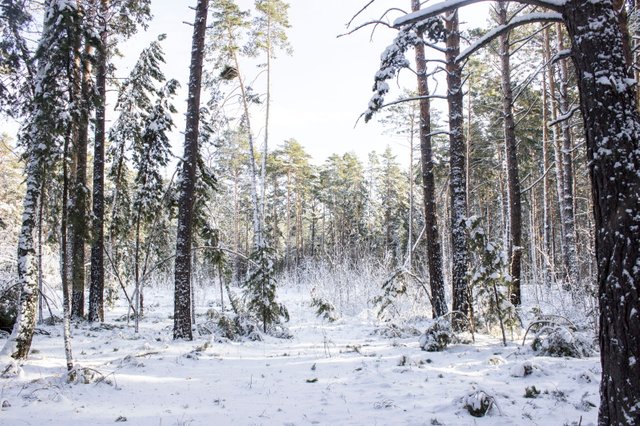
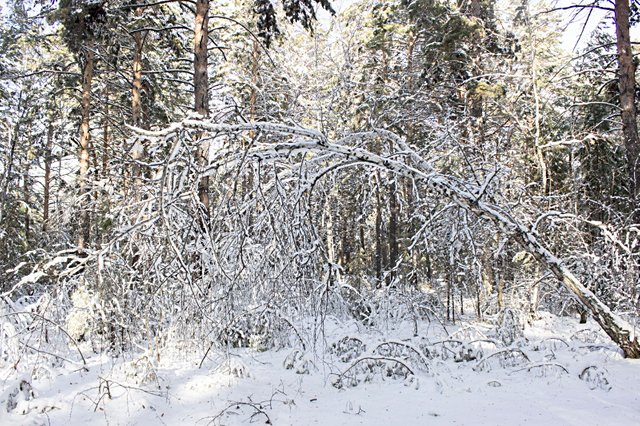
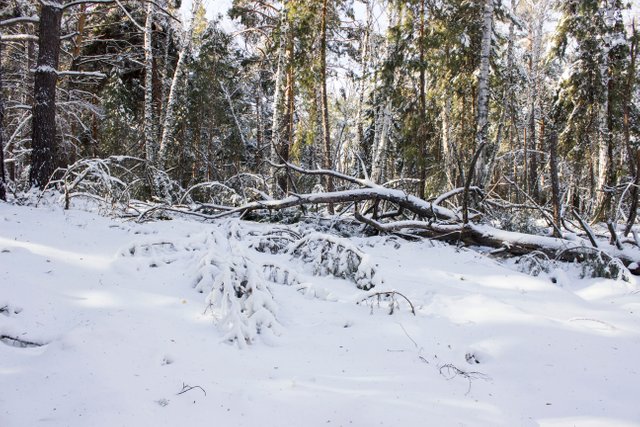
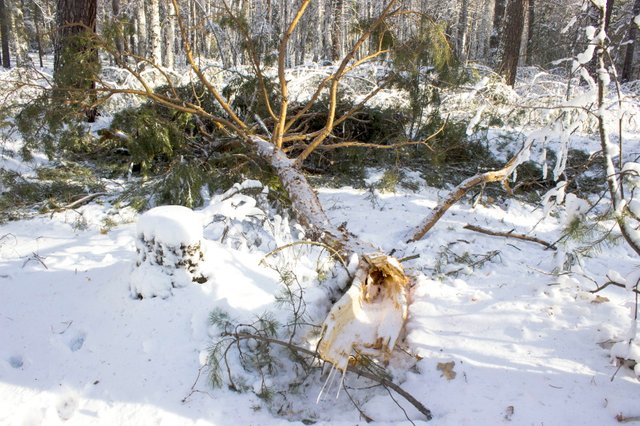
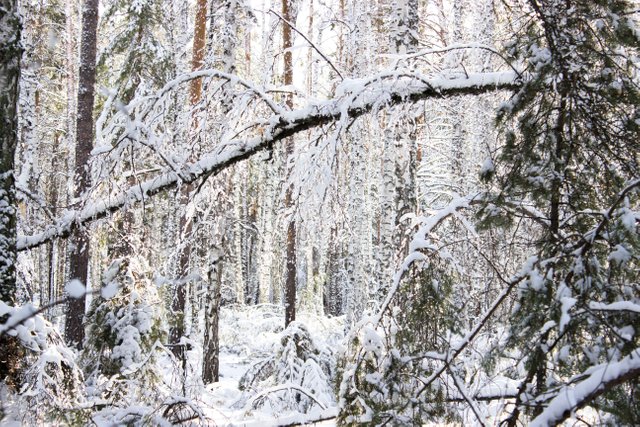
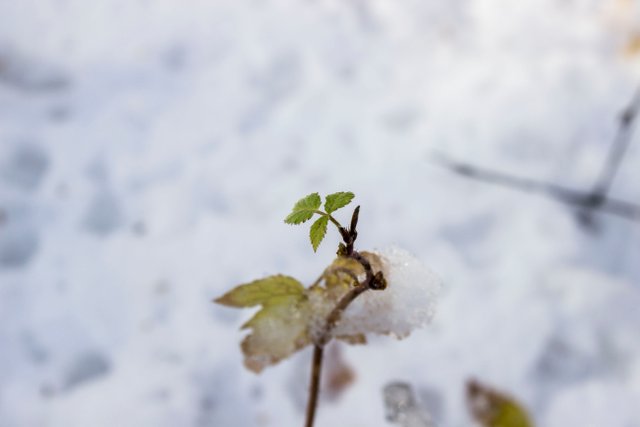
Горы отлично подходят для того чтобы служить естественным барьером для разных климатических зон, концентрировать в них ресурсы и создавать для них условия. Что бы мы без них делали. ^^ Были бы однородной серой массой, скучной и не интересной. А так: на западе - любители земледелия, на востоке - борцы.
Здесь тоже земледелие, но... рискованное)
TEAM 5 CURATOS
Congratulations! Your Comment has been upvoted through steemcurator08. We support good comments anywhere..
Curated by : @bambuka
Cool! Thanks!
Как у вас тут всё узорчато!
:)
И да, фотографировать снег с зеленью - отдельная тема.. непростая, в общем :)
Зима здесь красивая, да и лето тоже)
Зелень зимой выглядит несколько иначе, хвоя темнеет, а в свете скользящего низкого солнца верхушки и вовсе отдают желтизной.
Very beautiful photos of a forest winter fairy tale.
By the way, the western slopes of the Urals look destroyed, as if a strong shock wave was moving east. In addition, there are rocks and rocks that look melted, as if they were exposed to very high temperatures. The riddle of history :)
Ha, there's a lot of snow, but the drifts don't look too deep. I can guess hummocks, blueberries and small stumps under the snow :)
Очень красивые фотографии лесной зимней сказки.
Кстати, западные склоны Урала выглядят разрушенными , как если бы сильная ударная волна двигалась на восток. Кроме того есть камни и скалы, которые выглядят оплавленно, будто они попали под очень высокие температуры. Загадка истории :)
Ха, снега много, но сугробы выглядят не слишком глубокими. Я могу угадать кочки, черничник и небольшие пеньки под снегом :)
It was at the beginning of winter. But you're right, the winter is actually not very snowy.
The mountain range is old, the highest peaks in the northern Urals, in the south in general you can’t say in places that the Urals, so, hills and ridges. Yes, and the mountains in our part look like stone outcrops. The main version of various misunderstandings was a glacier, crushed everything, crumbled and ... obviously it melted))
Это было в начале зимы. Но ты прав, зима нынче на самом деле не очень снежная.
Горная гряда старая, самые высокие вершины на северном Урале, на юге вообще местами не скажешь что Урал, так, холмы да увалы. Да и горы в нашей части выглядят как каменные выходы породы. Основная версия разных непоняток-шёл ледник, всё смял, искрошил и ... очевидно он же расплавил))
да, ледники хорошо плавят породу, особенно камни. А чо, температура плавления гранитов маленькая )))
Кстати, какая?
судя по рассуждениям "учёных" не выше 100 градусов... )
test